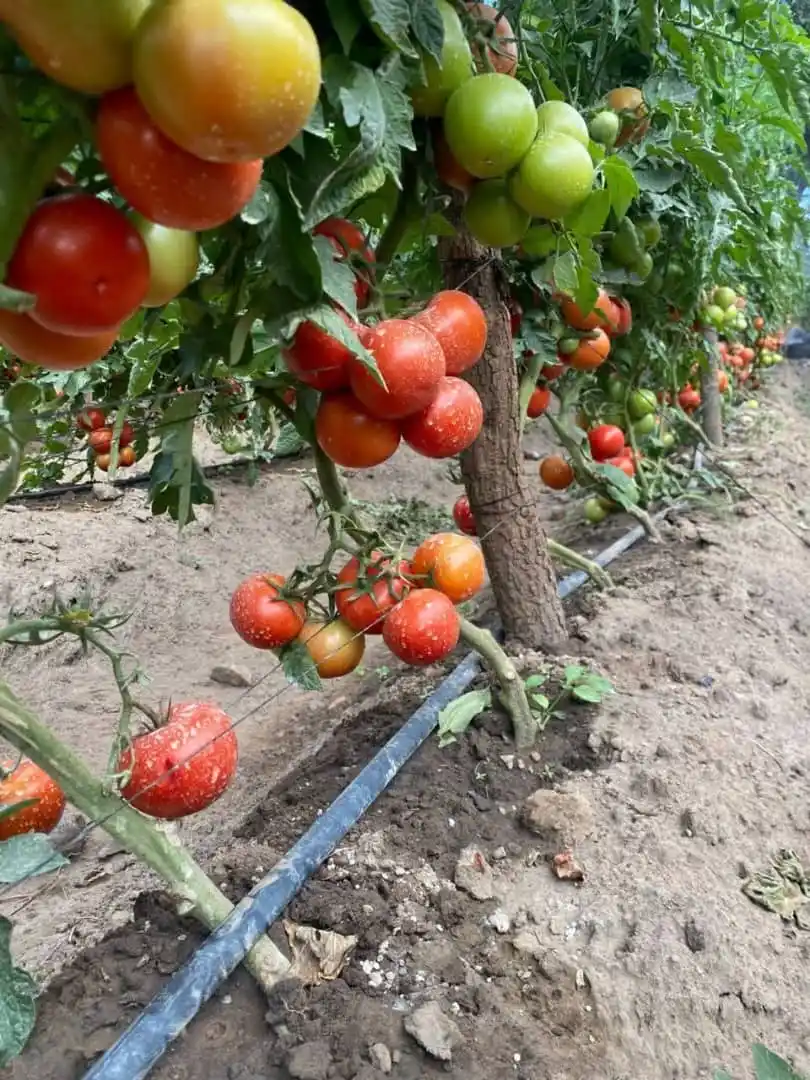
AGRONOMME🇷🇼
June 4, 2025 at 05:24 AM
🍅 Let’s Talk Tomatoes: A Real Guide to Modern Tomato Farming in East Africa
Earlier this week, I had a deep conversation with a young farmer from Kayonza who asked me,
“Brother, what does it take to grow tomatoes in the right, modern way? I’m tired of gambling with harvests.”
And honestly, his question speaks for many.
So let’s break it down — what does modern tomato farming really mean? And how can we make it work in the real conditions of Rwanda or East Africa?
🌱 1. Start with the Right Variety
Your journey begins with choosing the right tomato variety based on your market and environment.
For open-field farming, go with hardy varieties like Rio Grande, Moneymaker, or Marglobe.
For greenhouse or tunnel farming, consider hybrid varieties like Anna F1, Tanya F1, or Prostar F1 — they give higher yields and resist diseases.
> 💡 Tip: If you're growing for export or supermarket contracts, ask your buyers about their preferred varieties.
🪴 2. Raise Strong Seedlings
In Rwanda, many losses happen because people transplant weak or diseased seedlings.
Use a seedling tray with quality potting mix or cocopeat, and grow them in a nursery with a simple plastic cover or shade net for protection.
Germination takes 5–7 days.
Transplant after 3–4 weeks, when they have 4–5 healthy leaves.
🌍 3. Site Selection & Soil Preparation
Tomatoes love sunlight, well-drained loam soil, and a pH of 5.5–7.0.
If the soil is acidic (like many parts of Eastern Province), apply lime 3–4 weeks before planting.
Prepare your land with:
1. Deep ploughing
2. Raised beds or ridges (to improve drainage)
3. Apply well-decomposed manure or compost (10 tons/ha)
🚰 4. Irrigation is Key
Tomatoes are sensitive to water stress, especially during flowering and fruiting.
If you don’t have irrigation, try:
Drip irrigation for precise water usage.
Bottled irrigation for small plots.
Mulching with dry grass or black plastic to conserve moisture and control weeds.
🧪 5. Feeding Your Plants (Fertilizer Program)
Modern tomatoes are heavy feeders. Apply both organic and inorganic fertilizers.
General guideline (per hectare):
1. DAP at planting: 200 kg/ha
2. CAN or Urea: 150 kg/ha during vegetative stage
3. NPK (17:17:17): 200 kg/ha during flowering
4. Foliar feeds: Boost calcium to prevent blossom-end rot
> 💡 Apply fertilizers in split doses and always water after application.
🛡️ 6. Pest & Disease Management
Tomatoes are vulnerable to diseases like blight, leaf curl virus, and pests like aphids, whiteflies, and thrips.
Practice crop rotation (don’t plant tomatoes after other solanaceous crops like eggplant or peppers).
Spray fungicides like Mancozeb or Ridomil every 7–10 days.
Use natural repellents like neem for aphids.
Remove and destroy infected plants early.
🧺 7. Harvesting & Market
Tomatoes mature in 75–90 days depending on the variety and weather.
Harvest early in the morning when it’s cool, and avoid stacking too high to reduce bruising. Pack in ventilated crates and keep out of the sun.
> 🛒 Plan your marketing in advance. Connect with aggregators, supermarkets, or local traders before harvest.
✅ In Summary: What Makes It “Modern”?
1. Using hybrid seed
2. Growing under controlled nursery conditions
3. Irrigating smartly
4. Applying a feeding schedule
5. Practicing preventive crop protection
6. Documenting your practices for traceability
Modern farming doesn’t mean expensive; it means efficient, planned, and informed.
If you’re thinking of starting or improving your tomato farm this season, take it seriously from day one.
A good tomato farm can feed your home, your wallet, and even your dreams.

❤️
👍
3